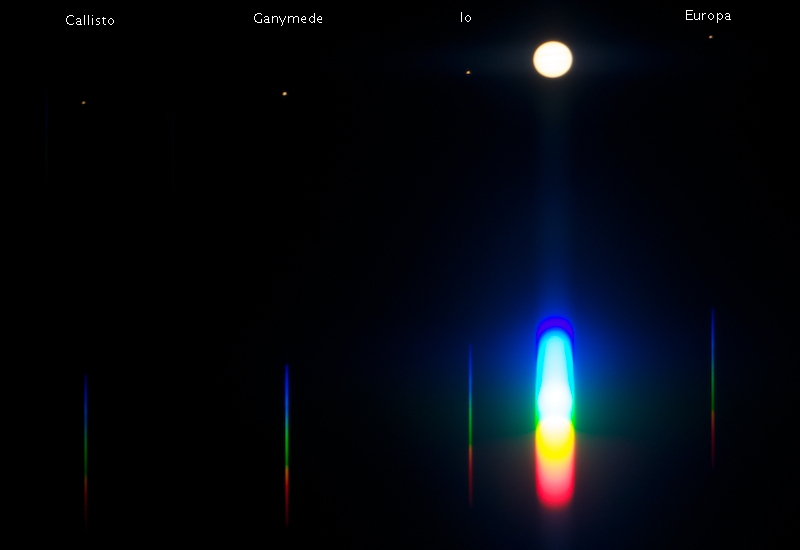
Imaging: Asteroid 4179 Toutatis, Jupiter Moons Spectra
Posted: 11 December 2012
The observatory was opened Monday, 10 December 2012, at 1805 MST, 53°F. The sky was clear and there was no wind. Unfortunately, the neighbor to the north had his bright horizontally aimed floodlights on. At 1810 MST, viewed Jupiter, low in the east, 77X. The four Galilean Moons were visible.
At 1820 MST, I slewed to the Right Ascension and Declination for Asteroid 4179 Toutatis, as shown in SkySafari 3 Pro on my iPhone. The asteroid will make its closest approach to the Earth the next night, but I thought I would try for it this night. At 1831 MST, I had IDed the stars shown by SkySafari using the 26mm eyepiece on the 8" LX200-ACF (77X). I then began watching for movement, which would indicate the asteroid. At 1834 MST, I had not yet detected any asteroid movement but I did see two polar orbiting satellites cross the field-of-view. By 1843 MST, I had positively identified the asteroid. Its motion against the background stars was very evident in less than a 5 minute period. And it was surprising bright.
I began preparing to image the asteroid with the D7000 DSLR at prime focus of the 8" telescope. I did a focus test on the star Fomalhaut using the Bahtinov Mask. At 1913 MST, I began imaging the asteroid using 1, 2, and 5 minute unguided and guided (on a star) ISO 1600 exposures. This is a full-frame, 1 minute, unguided, exposure:

Trailing due to the asteroid's rapid movement is very obvious in this short exposure. I plan to use the same exposure during the closest approach for comparison.
I ended imaging of the asteroid at 1939 MST, and resumed visual observing of it. I switched to the 9mm 100° eyepiece (222X). The asteroid's rapid motion was striking when it would pass near a comparably bright star.
At 2020 MST, I ended asteroid watching and slewed to Jupiter. Seeing wasn't great but the view was nice at 222X. At 2030 MST, saw a Geminid meteor. A few minutes later, my iPod shutoff due to the low temperature (39°F) in the obervatory. At 2040 MST, I began setting up for spectra imaging of Jupiter's four bright moons using the Star Analyzer 100. This night would be a test of my technique of using the "drift" method (Right Ascension drive turned off during the exposure). This first image is with tracking ON, 5 seconds, ISO 200, showing the moons, Jupiter, and their spectra:

The next image is with tracking OFF, 5 seconds, ISO 500:

Both images were slightly cropped from the full-frame versions. The test worked but I will need to use a higher ISO setting to capture the spectrum of all the moons. Also, a moon can not be too close to the planet, otherwise its spectrum will be impacted by the overexposed spectrum of the planet.
I completed spectra imaging at 2101 MST.
Closed the observatory at 2120 MST, 39°F. The neighbor's floodlights were still on. (In fact, they were still on after sunrise the next morning. I will try once again to talk to the neighbor. The last time I tried, his three large dogs kept me away.)
Comments are welcome; use the Comments section below, or you can Email Me. Thanks.
Go to the previous report.
Return to the Cassiopeia Observatory Home Page.